This is the second of a 2-part post on how to add more clarity and drama to your strategy presentations. The first part covered different structures Strategists can use to effectively present the core problem that they are facing, and this second part focuses on how to present the solution. In true Hollywood parlance, consider this post the second act in a two-act structure (not to be confused with a sequel).
Once you have effectively presented the core problem that you are intending to solve, you should have your audience leaning in to ask, “Ok, how?” This is where structuring your recommendation becomes critical. The last thing that you want to do is to walk your audience through a long list of seemingly disconnected ideas. You need to establish the right frame to present your recommendations in a way that is:
- Complete: includes all of the key recommendations that you are proposing
- Balanced: describes all recommendations in a similar manner and depth of detail
- Organized: displays relevant relationships between recommendations
- Aligned: points all recommendations towards the overall mission or goal
The structure that you use to tell this part of the story will depend on the nature of the problem you are solving, the context of your audience / presentation, and how your recommendations will ultimately be evaluated. The following are five different structures that I have used:
1. LADDERING UP TO A BUSINESS GOAL
This structure involves framing your recommendations in a way that overtly supports a clear and overarching business goal. This traditional structure works best for presentations that are focused on solving a specific business problem, with an audience evaluating recommendations based on business returns. Recommendations are driven down from the overall business goal, from strategy to supporting tactics.
2. SUPPORTING AN OVERALL VALUE PROPOSITION
This structure involves framing your recommendations in a way that supports an overall value proposition. This structure works best for more conceptual presentations, where you may be proposing a new brand / program idea or product / experience design. Recommendations are presented as strategic pillars supporting this overarching proposition, supported by related tactics.
3. ALIGNING WITH A CUSTOMER JOURNEY
This structure involves framing your recommendations within the construct of a journey or path-to-purchase for a customer. This structure works best for marketing or user experience presentations, where the goal is to engage with customers in a way that positively impacts behaviour or brand perception. Recommendations are presented as engagement opportunities that intersect and serve customers at key moments, to the benefit of both the customer and the business.
4. SEQUENCING STEPS OVER TIME
This structure involves framing your recommendations in a sequence of phases that increase in impact over time. This structure works best for presentations that are focused on building capabilities, including technical programs that involve platform maturation and release planning. Recommendations are presented as sets of activities that enable future phases, which deliver increasingly greater sophistication and impact.
5. EVOLVING FROM CURRENT TO FUTURE STATE
This structure involves framing recommendations in a way that describes how your solution will change the current state. This structure works best for presentations that are intended to be more emotional, where the Strategist can describe in broad-strokes ‘how we will change’ or ‘where we will go’. From-To statements are thematic, and can set the stage for more specific tactical recommendations (that may be presented in one of the earlier structures).
I hope that you have found this particular strategy story useful, and that these structures help you to shave off a few hours the next time you have to design a strategy presentation. If I come across any others during my next 10,000 hours, I will be sure to share.






